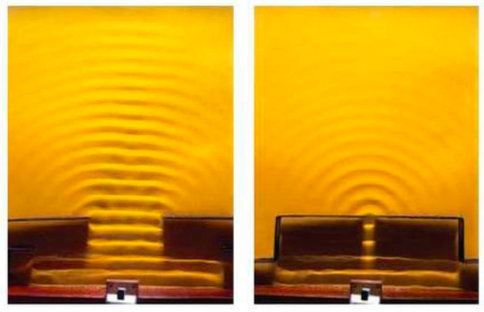

Now we will see how light waves demonstrate their wave nature by reflection, refraction and diffraction.Īll waves are known to undergo reflection or the bouncing off of an obstacle. In Unit 11 of The Physics Classroom Tutorial, the reflection, refraction, and diffraction of sound waves was discussed. The reflection, refraction, and diffraction of waves were first introduced in Unit 10 of The Physics Classroom Tutorial. Each one of these behaviors - reflection, refraction and diffraction - is characterized by specific conceptual principles and mathematical equations. If the boundary is merely an obstacle implanted within the medium, and if the dimensions of the obstacle are smaller than the wavelength of the wave, then there will be very noticeable diffraction of the wave around the object. The transmitted wave undergoes refraction (or bending) if it approaches the boundary at an angle. Specifically, there will be some reflection off the boundary and some transmission into the new medium. Rather, a wave will undergo certain behaviors when it encounters the end of the medium. On this page, we will focus on three specific behaviors - reflection, refraction and diffraction.Ī wave doesn't just stop when it reaches the end of the medium.

In Lesson 1, we will investigate the variety of behaviors, properties and characteristics of light that seem to support the wave model of light. Since light behaves like a wave, one would have good reason to believe that it might be a wave. Light behaves in a way that is consistent with our conceptual and mathematical understanding of waves. And light exhibits the Doppler effect just as any wave would exhibit the Doppler effect. Light undergoes interference in the same manner that any wave would interfere. Light diffracts in the same manner that any wave would diffract. Light refracts in the same manner that any wave would refract. Light reflects in the same manner that any wave would reflect. Light exhibits certain behaviors that are characteristic of any wave and would be difficult to explain with a purely particle-view. In this unit of The Physics Classroom Tutorial, the focus will be on the wavelike nature of light. The fact is that light exhibits behaviors that are characteristic of both waves and particles. An age-old debate that has persisted among scientists is related to the question, "Is light a wave or a stream of particles?" Very noteworthy and distinguished physicists have taken up each side of the argument, providing a wealth of evidence for each side.


 0 kommentar(er)
0 kommentar(er)
